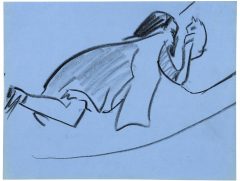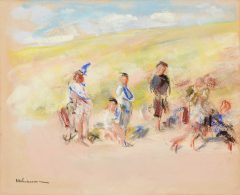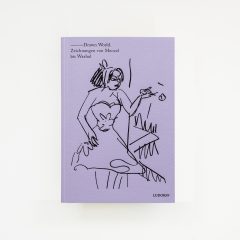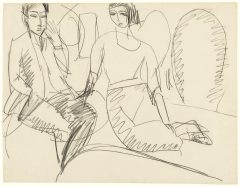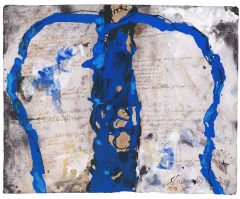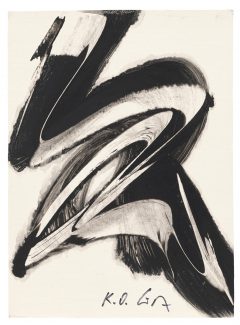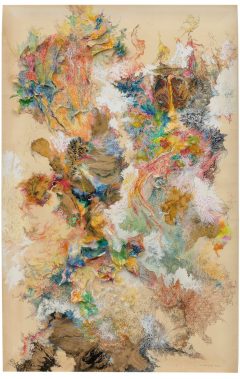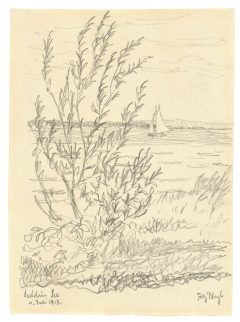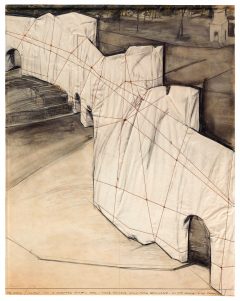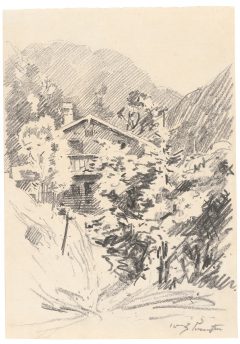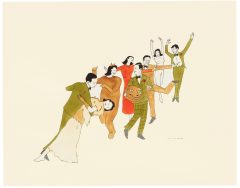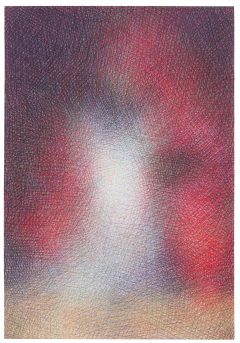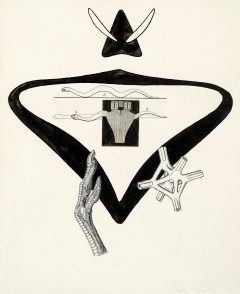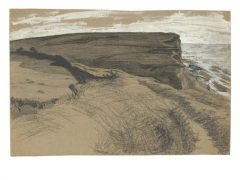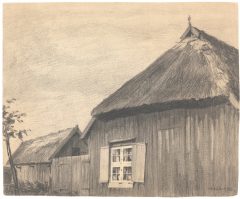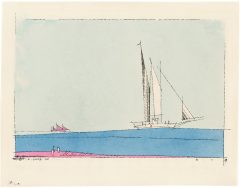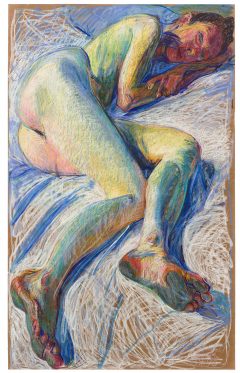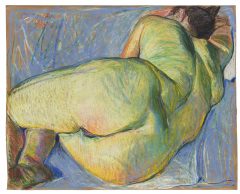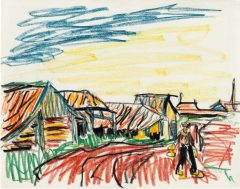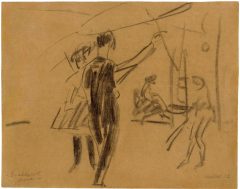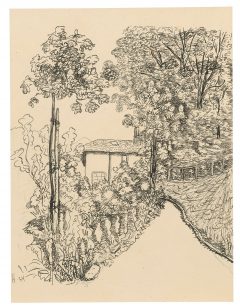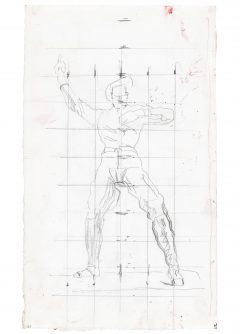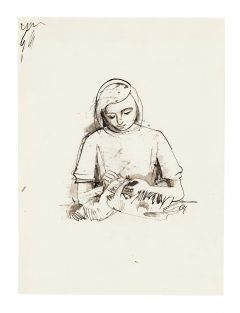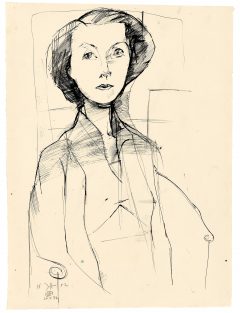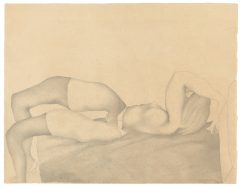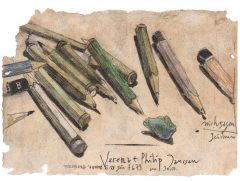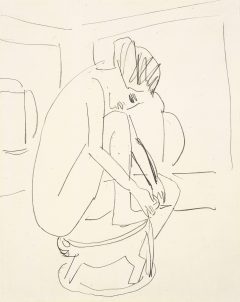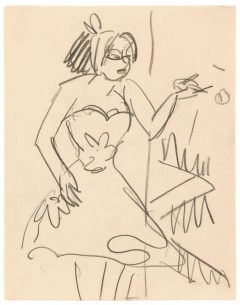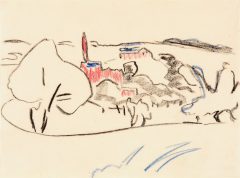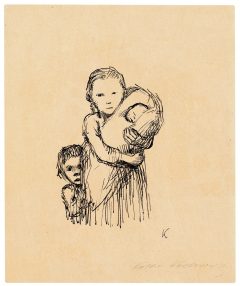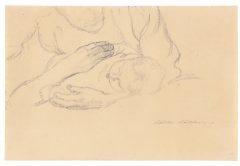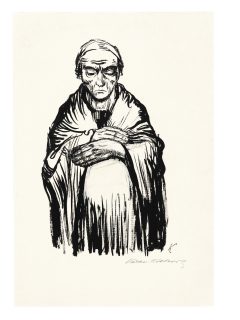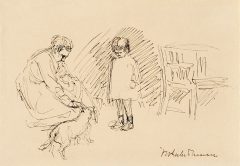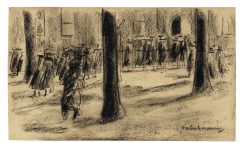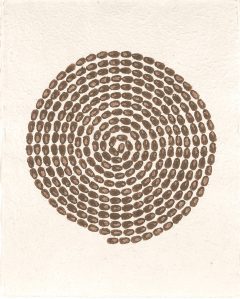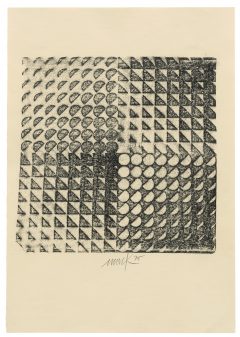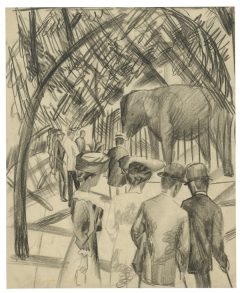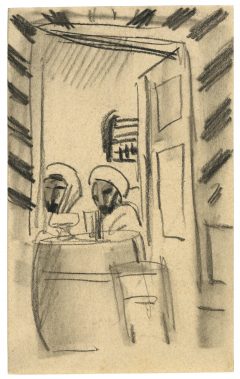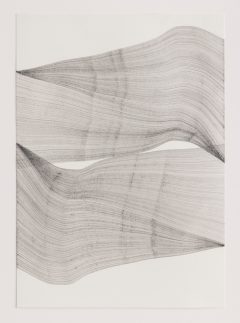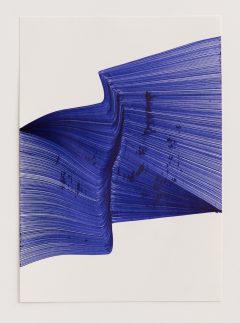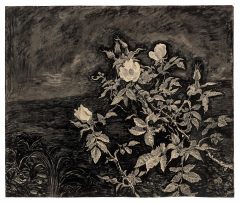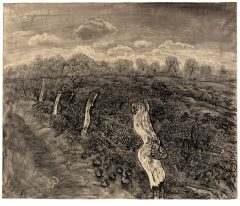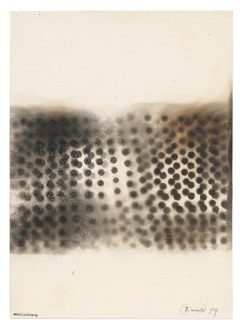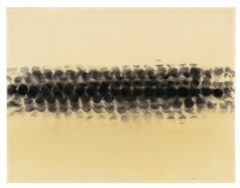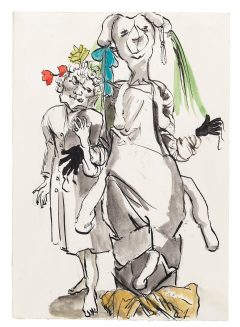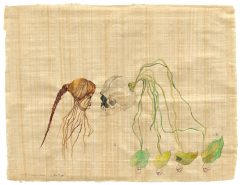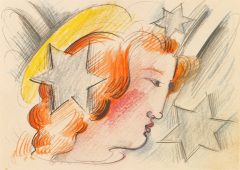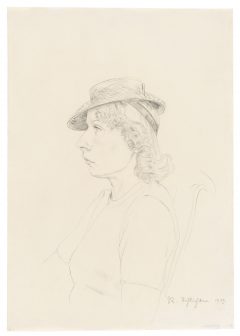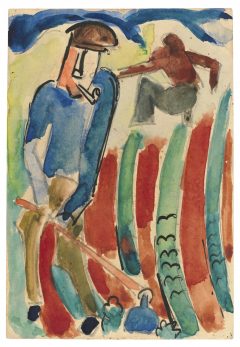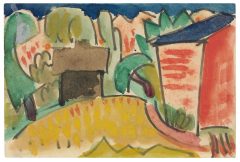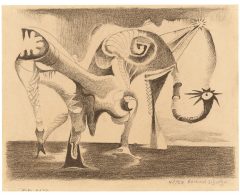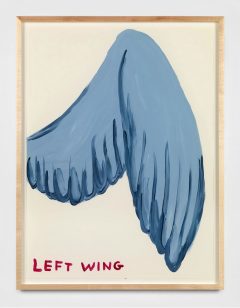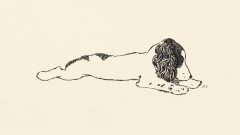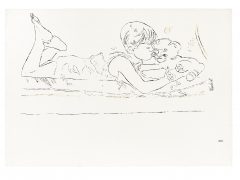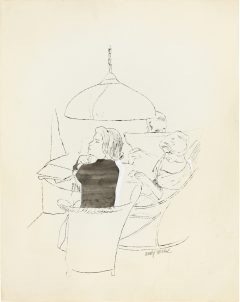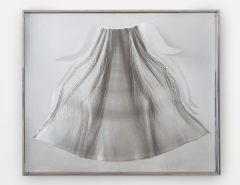Nov 14, 2019 – Feb 15, 2020
Gallery Ludorff Königsallee 22 Dusseldorf
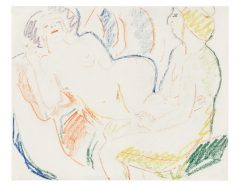
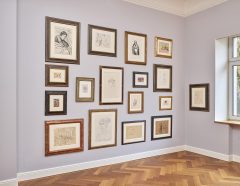
Intimate draft, quick sketch or autonomous work?
Drawing functions - like no other medium - as a seismograph for artistic innovation in art history. Starting November 14, Galerie Ludorff will dedicate a major exhibition overviewing the medium with drawings by more than 40 internationally renowned modern and contemporary artists.
The starting point of the exhibition is Adolph von Menzel, who already used the medium for experiments from the mid of the 19th century onwards. Details, lines and colors that emancipate themselves from the object are essential principles that mark the departure into modernism.
Video of the exhibition "Drawn World" - until 15 February at Galerie Ludorff
The so-called "15-Minuten-Akte" of "Brücke" artists are legendary. Their aim was to capture what they had seen as quickly and authentically as possible. The artists appreciated the first cast of the drawing from which they later derived graphics as well as canvas paintings. In addition to Kirchner's first-class early drawings, works by Erich Heckel and Otto Mueller bear witness to the great importance of drawing in Expressionism.
The founders of “Brücke” were not academy graduates and had no regard for technique and talent. It was with “directness and authenticity,” per their 1906 program – which comprises only two sentences – that they wanted to express “what drove them to creation”.
Gunda Luyken, in: "Drawn World. From Menzel to Warhol", Galerie Ludorff 2019
After the Second World War radical innovations allowed for the lines to free themselves completely from the motif and to become the actual object of artistic interest. Dynamic examples by Emil Schumacher, Karl Otto Götz, Bernard Schultze and Hans Hartung as well as early works by ZERO artists Otto Piene and Heinz Mack bear witness to the great energy that artists applied in the search for the New, new materials, forms and new techniques alike.
Followed by his role as a founding member of Quadriga, Götz was instrumental to the development of European abstract expressionism. Komposition, 1984, created with ink on paper, exemplifies the technique which dominated Götz’s later work, in which he painted or applied in ink a dark colour onto a light surface in a gestural, fast paced manner, working quickly and instinctively, then removed some of the paint or ink using a spatula in a raking technique, to heighten the contrast between the dark and light areas.
Katharine Stout, in: "Drawn World. From Menzel to Warhol", Galerie Ludorff 2019
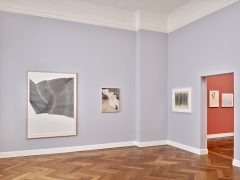
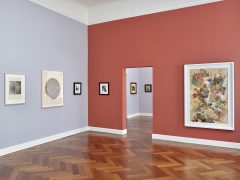
Drawn World: From Menzel to Warhol
Works by more than 40 internationally renowned artists were brought together. The wide timeframe from the end of the 19th century to the present day illustrates decisive milestones in the development of drawing techniques as well as in the range of motifs. Many interesting parallels but also many unexpected breaks in the use of the line are revealed when looking at the exhibition as a whole.
The exhibition will be accompanied by a catalogue with essays by Dr. Gunda Luyken, Director of the Graphische Sammlung at the Kunstpalast Düsseldorf and Katharine Stout, Vice Director of the Institute of Contemporary Arts in London.
